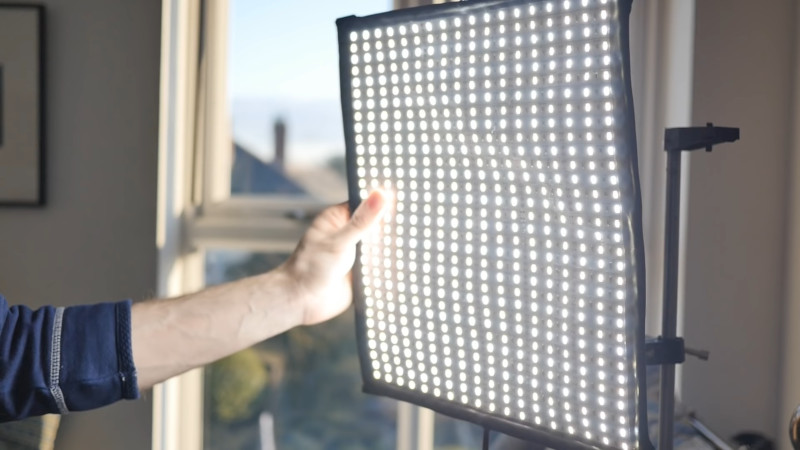In this day and age, production values are everything. Even bottom-rung content creators are packing 4K smartphones and DSLRs these days, so if you want to compete, you’re gonna need the hardware. Lighting is the key to creating good video, so you might find a set of flexible panel lights handy. Thankfully, [DIY Perks] is here to show you how to build your own. (Video embedded below.)
The key to building a good video light rig is getting the right CRI, or Color Rendering Index. With low CRI lights, colors will come out looking unnatural or with odd casts in your videos. [DIY Perks] has gone to the effort of hunting down a supplier of high-quality LED strips in a range of different color temperatures that have a high CRI value, making them great for serious video work.
To build the flexible panel, the LED strips are glued onto a fake leather backing pad, which is then given a steel wire skeleton to enable it to be bent into various shapes. Leather loops are built into each corner of the panel as well, allowing the light to be fitted to a stand using a flexible aluminium bracket. The LEDs are slightly under-volted to help them last longer and enable them to run from a laptop power supply.
The build is one that focuses on light quality and usability, rather than just throwing a bunch of bright LEDs at the problem and calling it good. The results are great, with the panel showing a significant improvement on [DIY Perks]’s earlier builds.
















I have to say, this is pretty neat. I really like the stuff this guy produces.
I built a bunch of very similar ones several years ago. Most are still in daily use.
You need to watch how hot they get: run at full rated power makes your substrate gets too hot to touch after a while, and then you get colour shifts and some LEDs start to wink out.
Run at 50% current (i.e. about 10% less voltage) and it still gets pretty warm, but they last better. Mine have 5000-10000 hours on them now.
Also, I tried the flexible approach, but it’s more of a pain than it’s worth: you’re forever rigging something to hold them. My daily drivers are now all on big aluminum sheets, with frames and handy 1/4-20 mounts to put on stands and tripods.
Seems like there should be some better insulation between the steel wire at the edges and the electrical system. If there are any spots where the glue isn’t so good, or it deteriorates with age could make a short.
(Sticking the steel wire in a tube of some kind of insulating material to start might be helpful.)
When did CRI get renamed from Color Reproduction Index to Color Rendering Index? Back in the days of first decent CRI Nichias, everyone used to call it Reproduction, not Rendering. Over the past 4-5 years, however, it suddenly got turned into Rendering. I wonder why…
To long to view. Those strips are supposed to be strung out on a line to dissipate the heat they make. Running them side by side bunched up, heat issues. Shoot shorts or shots, turn off quickly. Bend in the same place twice, eek. Why bend or fold at all?
It seems that all LCD screen LED’s are a scorching 5000K or more, but a cracked screen TV is just ripe for picking the LCD off and figuring out the auto shutoff game ( 5V somewhere) and you will have a great diffuse source of light. The newer ones are lightweight. I hung one flat from a plant hook on the ceiling and it’s the best light in the room even in the day right above the window.
Watch out for the specularity from X by X point sources. X by X little shadows. Look at the shadow texture on the wall at 16:45; jagged texture instead of smooth graduation. You want smooth shadow graduations for rending details in images, like skin details in portraits.
For natural smooth shadows and natural looking smooth details, you need some white ripstop or other purpose made lightmodifier sheets spaced out from the LEDs so you have even illumination across the entire panel. To get that in a thin panel you’d likely need two or more layers of modifiers, to diffuse the point sources sufficiently.
And a CRI of 85 is very low for photography; that’s just tolerable for a light source with people working/living in a room without going squirrely or feeling ‘unpleasant’ or ‘wrong’ but not knowing why. Should be getting 92 and up, if you want natural looking colours.
I didn’t see any long term testing of the leds, but I’ll take his word for it. The LED market is horrendous. How does one even find quality LED stips that will last?